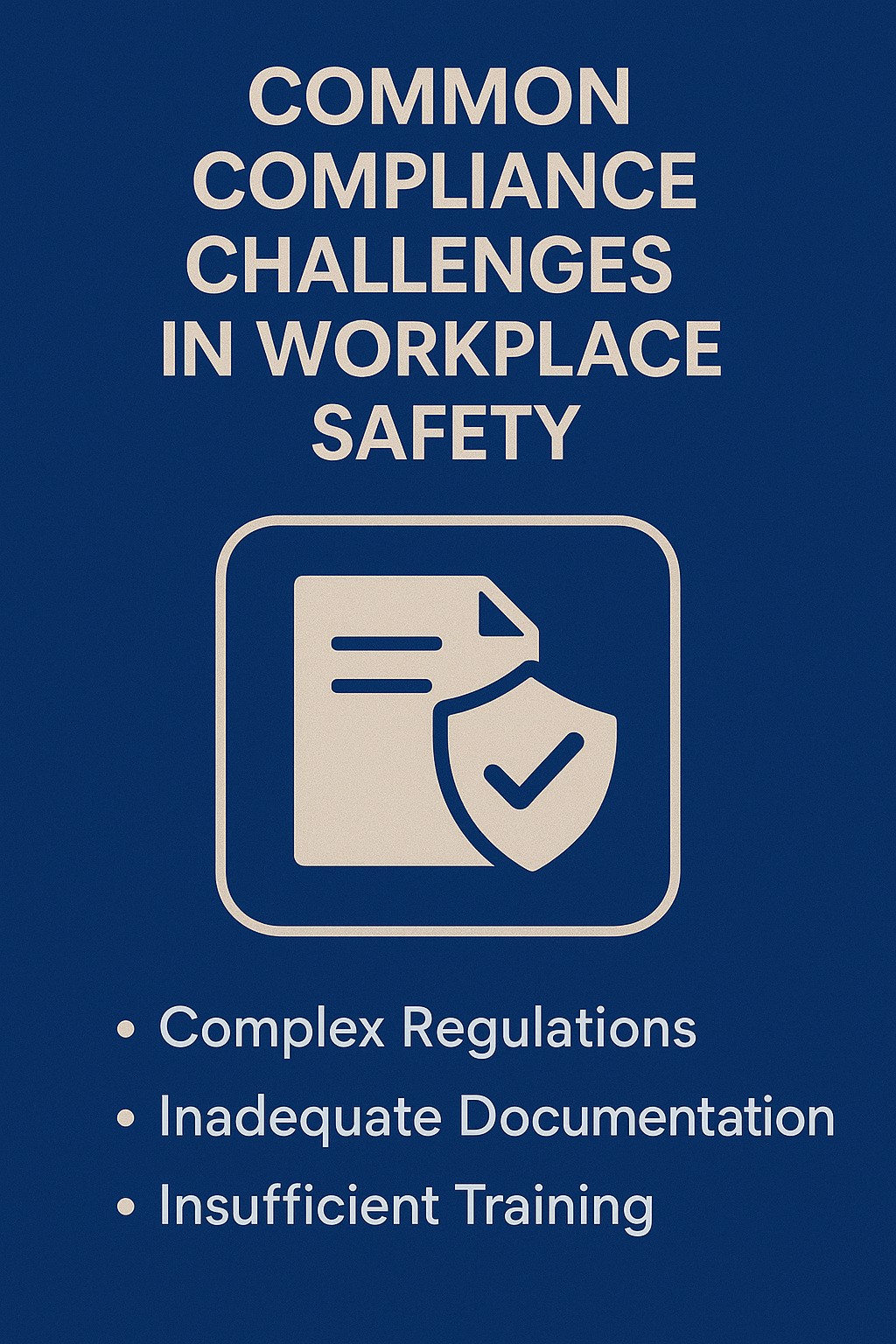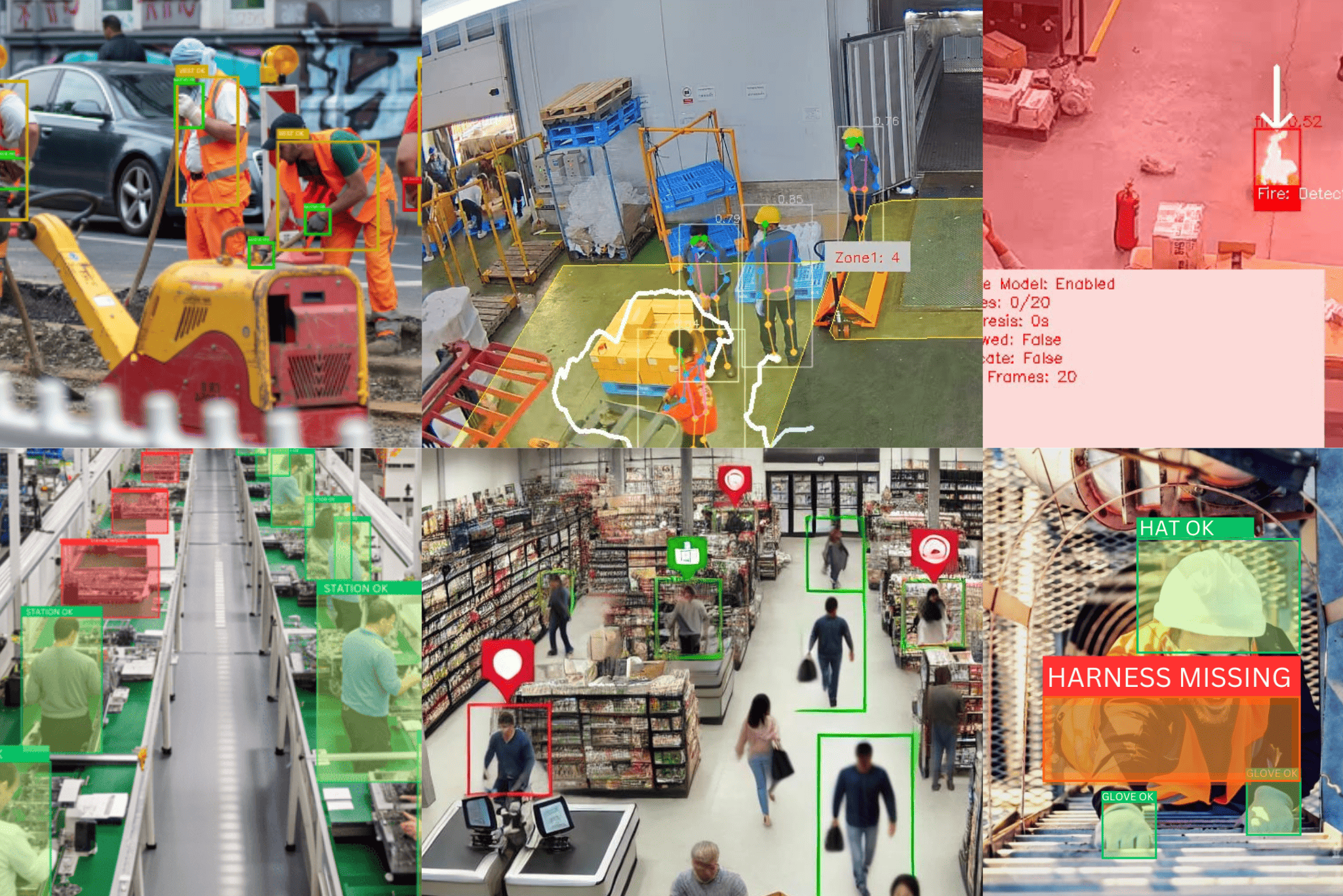Enhancing Workplace Compliance with Vision AI: Ensuring Safety and Efficiency

See It In Action

Safety AI Software in Action
See how Visionify's Safety AI Software monitors workplace safety in real-time
Example Videos
Safety AI Software in Action
See how Visionify's Safety AI Software monitors workplace safety in real-time
Forklift Zone Monitoring with Vision AI
See how Vision AI monitors forklift zones in real-time to prevent accidents
Hard Hat Compliance in Manufacturing
Vision AI PPE Compliance for Manufacturing
Key Takeaways
- Automated Monitoring: Vision AI provides continuous, real-time surveillance of workplace compliance
- Proactive Approach: Early detection of violations helps prevent incidents before they occur
- Comprehensive Coverage: AI systems can monitor multiple compliance areas simultaneously
- Reduced Burden: Automation decreases the manual effort required for compliance monitoring
- Data-Driven Insights: Analytics help identify patterns and improve compliance strategies
Understanding Workplace Compliance
Workplace compliance encompasses the regulations, standards, and guidelines that organizations must follow to ensure a safe, legal, and ethical working environment. These requirements span multiple areas, including occupational safety, labor laws, environmental regulations, and industry-specific standards.
For many organizations, maintaining consistent compliance presents significant challenges. Traditional approaches often rely on manual inspections, which can be time-consuming, inconsistent, and limited in coverage. This is where Vision AI technology is creating transformative opportunities.
 Vision AI can detect hard hat compliance in construction areas
Vision AI can detect hard hat compliance in construction areas
The Critical Importance of Workplace Compliance
Ensuring Employee Safety
The primary purpose of compliance regulations is to protect workers from harm. Proper adherence to safety standards significantly reduces the risk of accidents, injuries, and occupational illnesses. Organizations that prioritize compliance demonstrate their commitment to employee well-being, which fosters trust and improves workplace morale.
Mitigating Legal and Financial Risks
Non-compliance can result in severe consequences, including:
- Regulatory fines and penalties
- Legal liability and litigation costs
- Increased insurance premiums
- Production disruptions
- Reputational damage
The financial impact of these consequences often far exceeds the cost of implementing robust compliance measures.
Key Compliance Frameworks for Workplace Safety
Organizations typically must adhere to various regulatory frameworks, including:
Occupational Safety and Health Administration (OSHA): Sets and enforces protective workplace safety and health standards in the United States.
International Organization for Standardization (ISO): Provides standards like ISO 45001 for occupational health and safety management systems.
Industry-Specific Regulations: Many industries have additional compliance requirements tailored to their unique risks and operations.
Common Compliance Challenges
Organizations face numerous obstacles in maintaining consistent compliance:
 Common compliance challenges
Common compliance challenges
Manual Monitoring Limitations: Traditional inspection methods are labor-intensive and prone to human error.
Inconsistent Application: Different inspectors may interpret requirements differently, leading to variable enforcement.
Documentation Burdens: Maintaining comprehensive compliance records can be administratively overwhelming.
Evolving Regulations: Keeping pace with changing compliance requirements requires constant vigilance and adaptation.
How Vision AI Transforms Compliance Monitoring
Vision AI—the application of artificial intelligence to visual data—is revolutionizing how organizations approach compliance monitoring. These systems use advanced algorithms to analyze video feeds from cameras positioned throughout work environments, automatically identifying compliance issues in real-time.
Real-time Monitoring and Alerts
Vision AI systems continuously analyze workplace activities, instantly identifying potential compliance violations such as:
- Missing or improperly worn PPE
- Unsafe behaviors or procedures
- Blocked emergency exits or fire equipment
- Unauthorized access to restricted areas
When violations are detected, the system can generate immediate alerts to supervisors, enabling prompt intervention before incidents occur.
PPE Compliance Verification
Personal Protective Equipment (PPE) requirements vary across different work areas and tasks. Vision AI can be configured to monitor specific zones for appropriate PPE usage, such as:
- Hard hats in construction areas
- Safety glasses in manufacturing zones
- High-visibility clothing in traffic areas
- Respiratory protection in hazardous environments
The system provides consistent enforcement of these requirements without requiring constant human supervision.
Hazard Detection and Prevention
Beyond monitoring human behavior, Vision AI can identify environmental hazards that might compromise workplace safety:
- Liquid spills that could cause slips
- Smoke or fire indicators
- Improperly stored materials
- Equipment operating outside safe parameters
Early detection of these hazards allows for rapid response, potentially preventing accidents before they occur.
 AI Safety Monitoring Different Scenarios
AI Safety Monitoring Different Scenarios
Social Distancing and Occupancy Monitoring
In response to public health concerns, Vision AI can monitor adherence to social distancing protocols and occupancy limits. The system can identify areas where distancing guidelines are not being maintained or where occupancy exceeds safe limits, helping organizations protect employee health during disease outbreaks.
Implementation Considerations
Organizations looking to leverage Vision AI for compliance monitoring should consider several factors:
Integration with Existing Systems: How will Vision AI complement current compliance processes and technologies?
Privacy Policies: Clear guidelines regarding data collection, storage, and usage are essential for addressing privacy concerns.
Staff Training: Employees need to understand how the system works and how it supports (rather than replaces) human safety oversight.
Customization Requirements: Different industries and facilities may require specific configurations to address their unique compliance needs.
The Future of Compliance Monitoring
As Vision AI technology continues to advance, we can expect even more sophisticated compliance monitoring capabilities:
- Predictive analytics that identify potential compliance issues before violations occur
- Integration with wearable technology for more comprehensive monitoring
- Advanced pattern recognition that identifies subtle precursors to safety incidents
- Automated compliance reporting that streamlines regulatory documentation
These developments promise to make compliance monitoring more effective, less burdensome, and increasingly proactive.
Conclusion: Transforming Compliance from Burden to Benefit
Vision AI is transforming workplace compliance from a challenging obligation into a strategic advantage. By automating monitoring, providing real-time alerts, and generating valuable insights, these systems help organizations maintain safer workplaces while reducing the administrative burden of compliance.
For forward-thinking organizations, Vision AI represents an opportunity to not only meet regulatory requirements but to exceed them—creating work environments that prioritize safety, efficiency, and employee well-being.
Ready to transform your approach to workplace compliance? Contact Visionify today to learn how our Vision AI solutions can enhance safety monitoring while reducing compliance burdens.
Frequently Asked Questions
Find answers to common questions about this topic
Want to learn more?
Discover how our Vision AI safety solutions can transform your workplace safety.
Schedule a DemoSchedule a Meeting
Book a personalized demo with our product specialists to see how our AI safety solutions can work for your business.
Choose a convenient time
Select from available slots in your timezone
30-minute consultation
Brief but comprehensive overview of our solutions
Meet our product experts
Get answers to your specific questions
Subscribe to our newsletter
Get the latest safety insights and updates delivered to your inbox.